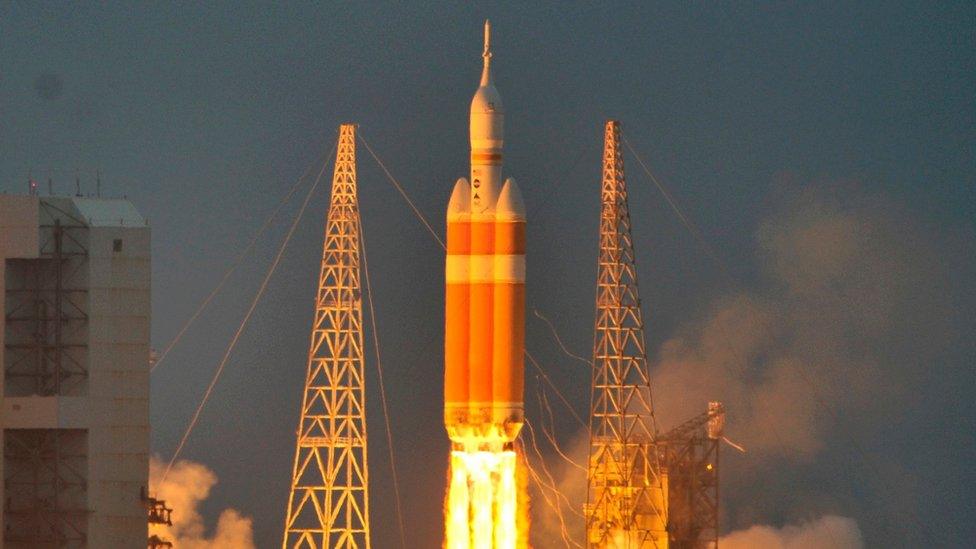Artemis I: Orion spacecraft is on its way back to Earth
- Published
- comments
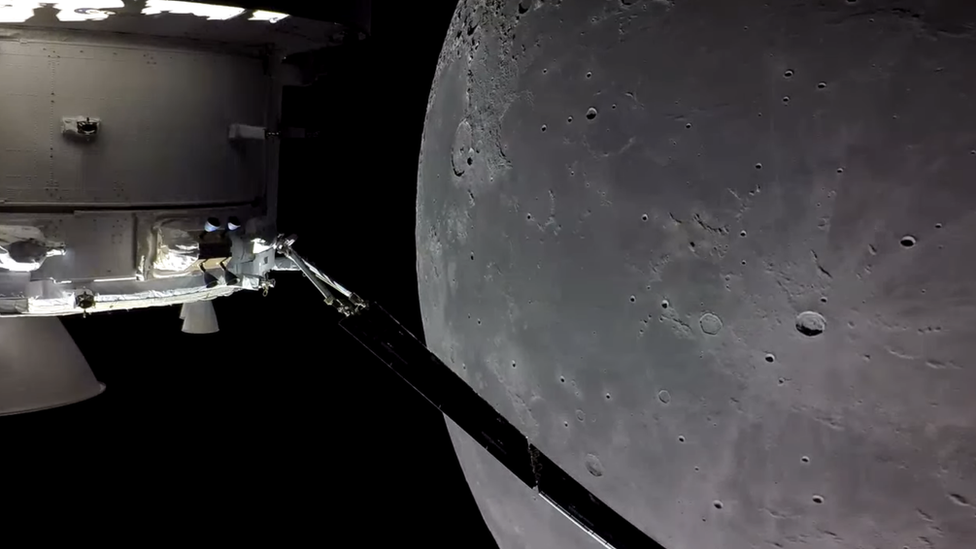
Orion passed a mere 130km (80 miles) from the lunar surface at closest approach
Nasa's Orion capsule is travelling back to Earth after completing its three week mission to the Moon.
It has spent a week looping around the Moon in a wide, sweeping orbit and completed its closest pass by on Monday - travelling around the side of the lunar surface that we never see from Earth, due to its rotation.
As it passed back into view of Earth, beaming back some amazing never-before-seen images showing the unusual angle of a close-up moon and a crescent Earth.
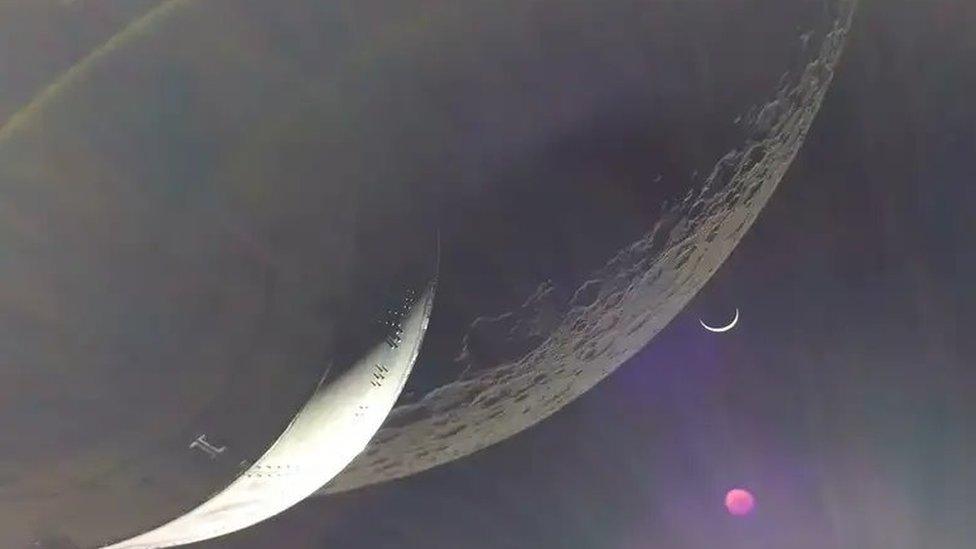
That crescent shape isn't the Moon - it's the Earth!
This journey also saw the spacecraft go 430,000km (270,000 miles) beyond Earth - the furthest any spacecraft designed to carry humans has travelled.
It also passed by some of the landing sites where past Moon landings, including the Apollo missions, took place.
On its return journey, Orion did another flyby of the Moon and then lit up its thrusters to begin the journey back to Earth.
It is expected to land in the Pacific Ocean on Sunday.
What is Orion?
WATCH AGAIN: Nasa's Artemis I rocket blasts off
Orion is part of the Artemis missions, a series of Nasa missions working towards returning humans to the Moon, and maybe also Mars.
It set off from Florida on 16 November, and was put into an extended loop around the Moon on 22 November shortly after arriving.
This first mission, Artemis-1, has been all about testing systems with astronauts on board, but if Orion makes it back to Earth safely they will travel on the next mission, Artemis-2.
That next mission is scheduled for late 2024.
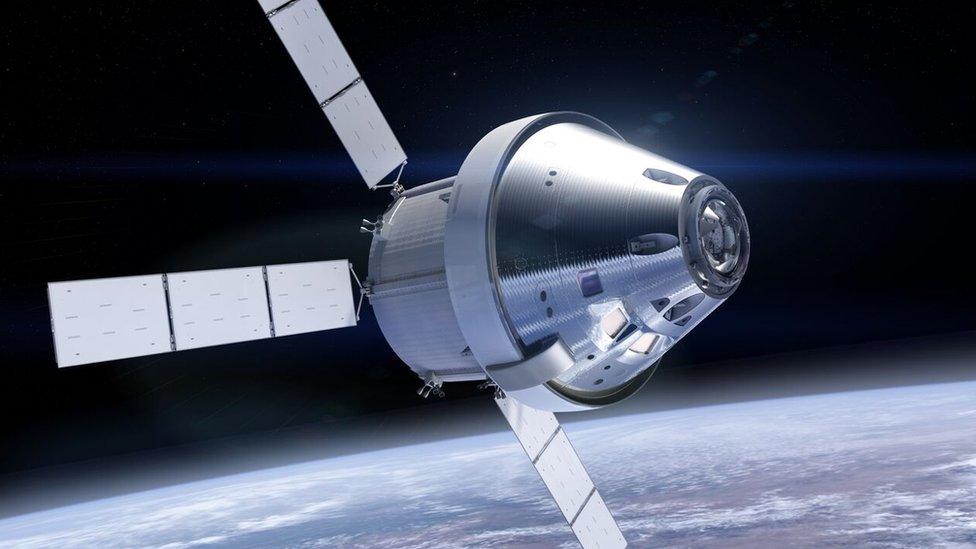
Artwork: This is a demonstration before astronauts step aboard the capsule
Artemis-3 is most eagerly anticipated - an attempt to land people back on the lunar surface for the first time in more than 50 years.
The last time humans were on the Moon was Apollo 17 in 1972. Artemis-3 could take place in late 2025 or in 2026.
How will it get back to Earth?
Two big engine bursts are designed to turned the ship for home.
The first of these was fired last Thursday 1 December, and the second on Tuesday 6 December.
Nasa is describing Orion's safe return as its "priority one" for the mission.
Nasa put up a drone to watch Orion drop down into the Pacific Ocean
Engineers want to see proof that the vehicle can survive the heat of re-entry into Earth's atmosphere.
Orion will be moving at about 39,500km/h, which is much faster than a spacecraft coming back from the International Space Station.
As the vehicle pushes up against the air in front of it, pressure and friction will generate temperatures approaching 3,000C.
Nasa and spacecraft manufacturer Lockheed Martin need to know the shield on the capsule's underside is absolutely fit for purpose before astronauts are asked to ride aboard.
If the shield works and the 11 parachutes deployed to further slow the spacecraft also work, a controlled landing off the California coast should take place not long after 5.30PM UK time on Sunday.
- Published30 November 2022
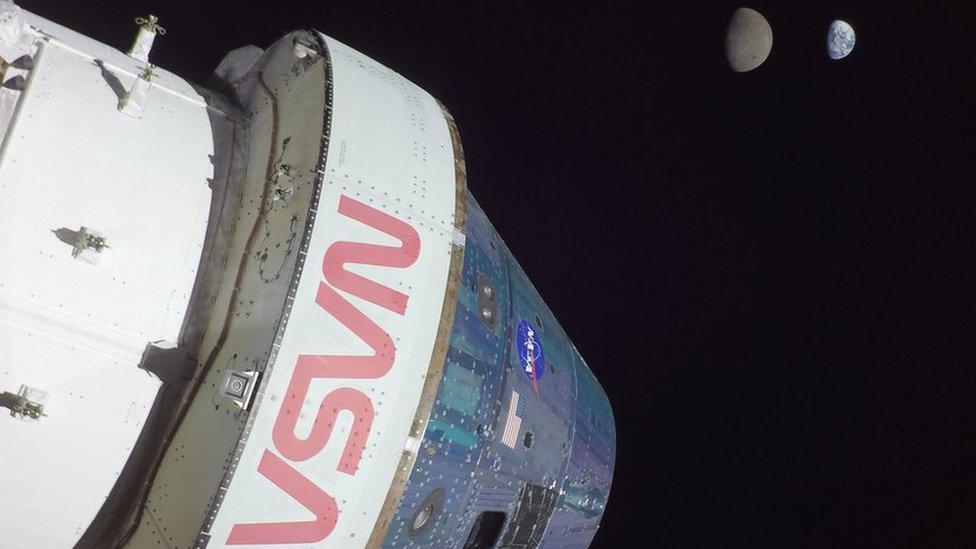
- Published6 December 2014
